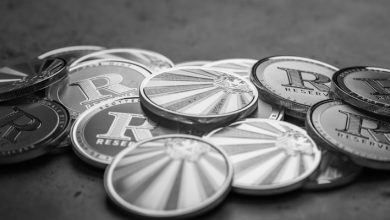The Future of Fractionalized NFTs: Opportunities and Risks

- Understanding Fractionalized NFTs
- Exploring the Potential of Fractional Ownership in NFTs
- Challenges of Fractionalized NFTs
- How Fractionalization Can Democratize NFT Ownership
- Risks Associated with Investing in Fractionalized NFTs
- Regulatory Considerations for Fractionalized NFTs
Understanding Fractionalized NFTs
Fractionalized NFTs are a new innovative way to invest in digital assets. These tokens represent ownership of a fraction of an NFT, allowing investors to buy and sell shares of high-value NFTs. Understanding how fractionalized NFTs work is crucial for anyone looking to participate in this emerging market.
When an NFT is fractionalized, it is divided into smaller units that can be owned by multiple investors. This process opens up opportunities for smaller investors to own a piece of expensive NFTs that they wouldn’t be able to afford otherwise. Fractionalization also increases liquidity in the NFT market, as investors can easily buy and sell shares of NFTs without having to purchase the entire asset.
However, investing in fractionalized NFTs comes with its own set of risks. Since these assets are still relatively new, their value can be volatile and difficult to predict. Additionally, there is a risk of fraud or manipulation in the market, as fractionalized NFTs are not as regulated as traditional investments. It is important for investors to do their due diligence and research before diving into this market.
Exploring the Potential of Fractional Ownership in NFTs
Fractional ownership in NFTs presents an exciting opportunity for investors to diversify their portfolios and gain access to high-value assets. By purchasing a fraction of an NFT, investors can participate in the potential upside of owning a valuable digital asset without having to commit to the full cost of ownership. This model also allows for greater liquidity, as investors can buy and sell fractions of NFTs more easily than whole NFTs.
One of the key benefits of fractional ownership in NFTs is the ability to invest in a wide range of assets that were previously out of reach for many investors. By pooling resources with other investors, individuals can collectively own rare art pieces, collectibles, and other valuable digital assets. This democratization of access to high-value assets opens up new investment opportunities for a broader range of individuals.
Additionally, fractional ownership in NFTs can also help to mitigate risk for investors. By spreading their investment across multiple assets, investors can reduce their exposure to any single asset’s volatility. This diversification strategy can help to protect investors from significant losses if the value of a particular NFT were to decline.
Overall, exploring the potential of fractional ownership in NFTs can provide investors with a unique opportunity to participate in the growing digital asset market. This innovative investment model offers benefits such as diversification, liquidity, and access to high-value assets that were previously inaccessible to many investors. As the popularity of NFTs continues to rise, fractional ownership presents a compelling investment option for those looking to expand their portfolios and capitalize on the potential of digital assets.
Challenges of Fractionalized NFTs
One of the challenges of fractionalized NFTs is the complexity of ownership and governance. With multiple parties holding fractions of an NFT, decisions regarding the asset can become convoluted. Disagreements may arise over how the NFT should be managed or monetized, leading to potential conflicts among stakeholders.
Another challenge is the lack of regulation in the fractionalized NFT space. As this market is relatively new, there are few guidelines in place to protect investors or resolve disputes. This regulatory uncertainty can create risks for those involved in fractionalized NFT transactions.
Furthermore, there is the issue of liquidity for fractionalized NFTs. While dividing an NFT into fractions can make it more accessible to a wider range of investors, it can also make it harder to sell or trade these fractions. The illiquidity of fractionalized NFTs could potentially limit their value and attractiveness to investors.
How Fractionalization Can Democratize NFT Ownership
One of the key benefits of fractionalizing NFTs is the potential to democratize ownership. By breaking down expensive NFTs into smaller, more affordable shares, a wider range of investors can participate in the market. This opens up opportunities for individuals who may not have the capital to purchase a whole NFT to still be able to invest in this growing asset class.
Additionally, fractionalization can also help to reduce the risk associated with owning a single NFT. By spreading ownership across multiple investors, the impact of any potential loss is minimized. This can help to attract more risk-averse investors who may have been hesitant to enter the NFT market due to its volatile nature.
Furthermore, fractionalization can also increase liquidity in the NFT market. By allowing investors to buy and sell shares of an NFT rather than the whole asset, it becomes easier to enter and exit positions. This can help to create a more dynamic and active marketplace, driving increased interest and participation from a broader range of investors.
Risks Associated with Investing in Fractionalized NFTs
Investing in fractionalized NFTs can offer exciting opportunities for diversification and access to high-value assets that may have been out of reach for many investors. However, it is essential to be aware of the risks associated with this type of investment.
One potential risk of investing in fractionalized NFTs is the volatility of the market. The value of NFTs can fluctuate significantly based on factors such as market demand, the reputation of the creator, and trends in the digital art world. This volatility can lead to sudden and significant changes in the value of your investment.
Another risk to consider is the lack of regulation in the NFT market. Unlike traditional investments that are subject to oversight by regulatory bodies, the NFT market operates in a largely unregulated space. This lack of regulation can make it challenging to address issues such as fraud, theft, and disputes over ownership rights.
Additionally, investing in fractionalized NFTs requires a certain level of technical knowledge and understanding of blockchain technology. Without a solid grasp of how NFTs work and the risks involved, investors may struggle to make informed decisions and protect their investments effectively.
It is also crucial to consider the potential for liquidity issues when investing in fractionalized NFTs. Unlike traditional assets that can be easily bought or sold on stock exchanges, NFTs can be more challenging to liquidate quickly, especially if there is a lack of demand in the market.
In conclusion, while fractionalized NFTs present exciting opportunities for investors, it is essential to approach this space with caution and an understanding of the risks involved. By educating yourself on the market, staying informed about trends, and conducting thorough research before investing, you can better position yourself to navigate the risks and potentially reap the rewards of this innovative asset class.
Regulatory Considerations for Fractionalized NFTs
When considering the regulatory aspects of fractionalized NFTs, it is crucial to understand the potential implications of this innovative financial instrument. Fractionalized NFTs involve dividing ownership of a non-fungible token into smaller, tradable shares. This introduces a new layer of complexity to the regulatory landscape, as it blurs the lines between traditional securities and digital assets.
From a legal standpoint, fractionalized NFTs may fall under existing securities regulations, depending on how they are structured and marketed. It is essential for market participants to consult with legal experts to ensure compliance with relevant laws and regulations. Additionally, regulatory bodies such as the SEC are closely monitoring the development of NFT markets to address potential risks to investors and maintain market integrity.
One of the key considerations for regulators is investor protection. Fractionalized NFTs can provide retail investors with access to assets that were previously out of reach, but they also come with risks such as price volatility and liquidity concerns. Regulators may impose restrictions on who can invest in fractionalized NFTs and how they are marketed to the public to mitigate these risks.
Another important aspect of regulatory considerations for fractionalized NFTs is tax implications. Ownership of NFTs, whether fractionalized or not, can have tax consequences that vary by jurisdiction. Investors need to be aware of their tax obligations when buying, selling, or trading fractionalized NFTs to avoid running afoul of tax laws.
In conclusion, the future of fractionalized NFTs presents both opportunities and risks for investors and market participants. Understanding and complying with regulatory requirements is essential to ensure the long-term viability and legitimacy of this emerging asset class. By staying informed and seeking legal guidance, stakeholders can navigate the evolving regulatory landscape and capitalize on the potential benefits of fractionalized NFTs.



